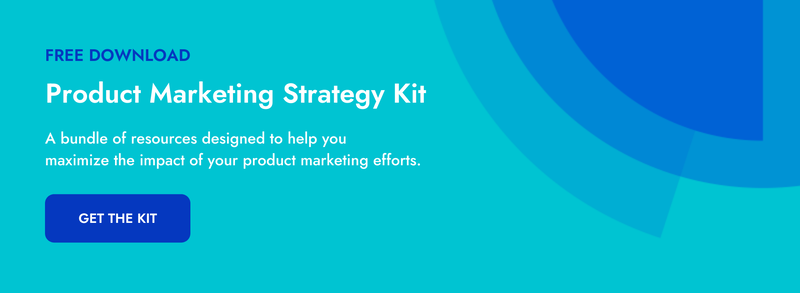 Crayon's Product Marketing Spotlight is an interview series where we chat with product marketers to get a glimpse into their careers and gain unique insight into product marketing strategy. In this edition of the Product Marketing Spotlight Series, we shine the light on Blake Grubbs, Head of Growth and Product Marketing at Simplr.
Crayon's Product Marketing Spotlight is an interview series where we chat with product marketers to get a glimpse into their careers and gain unique insight into product marketing strategy. In this edition of the Product Marketing Spotlight Series, we shine the light on Blake Grubbs, Head of Growth and Product Marketing at Simplr.
ED: What is your role, and what does your company do?
BG: I’m currently the Head of Growth and Product Marketing at Simplr where I focus on shaping our company’s strategic narrative, crafting product positioning and messaging, enabling sales, and establishing our strategy for bringing products to market.
Simplr is a company that was originally incubated by Asurion and is disrupting the outsourced contact center space by offering a more flexible and efficient customer experience solution, without the traditional subpar practices of the old school BPOs/offshore call centers. We support pre-sale, post-sale and sales support for email, chat, SMS, and other inbound channels and are compatible with most help desk and billing platforms.
ED: Tell me a little bit about your career. What led up to you becoming a product marketer at Simplr?
BG: So, I’ve worn a few hats in my career so far, which has been a great experience and given me great perspective. I started my career at Seismic, where I focused on demand generation and marketing operations and continued on the path of marketing operations at Drift. I love working with data to help make informed strategic decisions, so marketing ops was a natural focus for me. But one of the things that gave me the itch to get into product marketing was seeing how well Drift did product marketing and the story that they were able to thoughtfully craft. So I ended up leaving Drift and getting my first product marketing opportunity at TechTarget, where I was able to get a really great baseline of product marketing from a more mature public company.
From there, I got an opportunity to lead product marketing and go-to-market strategy at a series-A funded startup called Alyce, which was a really fun experience, and I was able to get a little more strategic acumen under my belt. And now, I’m here at Simplr, actually working with my former manager from both Alyce and Seismic, where we’re working on positioning ourselves as a must-have CX solution for fast-growing companies.
ED: What sparked your interest in product marketing?
BG: Working at Drift really sparked that for me to be honest. I worked with some amazing marketers and product marketers there, and even though I wasn’t doing product marketing, I started to understand how strategic and impactful product marketing and brand could really be for a high-growth company, and I wanted to be able to help drive that impact. I’ve always been a writer at heart, I love storytelling, and I kind of realized product marketing was my opportunity to bring those interests into my work life.
ED: How do you incorporate competitive intelligence into your role?
BG: Competitive intelligence is so important for any product marketer. For everything a product marketer does, they need to be keenly aware of what else is out there in the market. Whether I’m working on positioning a product, adjusting pricing and packaging strategy, launching a new product, or working on our overall strategic narrative, I need to put all of that in the context of the alternatives our target market has in order to make sure we’re differentiating ourselves in the most effective way.
ED: How has your day-to-day been impacted by current events? Has it impacted the way you execute on a product launch or refreshed messaging?
BG: I’d say it’s been impacted pretty significantly. I’d say product marketers, and companies in general, are going to get left behind if they aren’t thinking hard about how they can evolve their positioning, messaging, and overall GTM strategy to better adjust to the conditions we’re in right now. To me, product marketing (and marketing and sales in general) is all about context. You need to position your company’s solution into the context that your customer is operating in: what their challenges are, what their day-to-day looks like, and which market trends and events are occurring around them. So when a significant event in the market happens, one that creates more challenges (or opportunities in some cases), you need to adjust your messaging to keep up. Otherwise, you’re not really being as relevant as you should be.
ED: How do you balance supporting each of your internal stakeholders across sales, marketing, product, customer success, and executive leadership?
BG: I actually think this is one of the hardest parts of product marketing. I don’t think there’s any silver bullet for creating this balance, but I do think there are two things I try to keep in mind. First, is that you have to be aware of the stage your company is at and the strategy your company has at each stage. For example, in the early stages of your company, product marketing needs to be more focused on getting the word out there. Which means more attention spent on marketing content, nailing your story, and launching products that can generate more interest. But as your company matures and you get a more mature customer base, your attention probably needs to shift a little bit toward enabling your customer success and sales teams to continue scaling the business.
The second thing I try to keep in mind, and this is a softer skill, is just to listen. If you’re actually consistently listening to all your stakeholders across the business and to your customers and prospects, it becomes easier to distill what’s actually most important. Just like you’re trying to understand your customers’ biggest pains, you need to understand your internal stakeholders’ pains, and attack the biggest pains first.
ED: How do you get your sales team to adopt and leverage your sales enablement resources?
BG: This probably is oversimplifying it, but I think the key is really to create content that’s actually useful for them. I listen to Gong calls, I talk to all of the reps, I talk to customers myself and try to understand the primary pains and common objections, and create the content and resources that help the team overcome them more easily.
It’s really easy for a product marketer to just churn out a bunch of one-pagers and decks and feel like they’re doing a good job, but if those aren’t really answering any critical questions, then they don’t matter. Your sales team won’t use them, and it can actually start to cause a sense of distrust from your sales team, because they think that you either don’t understand the problems or don’t care about understanding the problems.
The other tip I’d give is to invest in some sort of sales enablement platform. I’ve found it to be much easier to get reps to adopt content when they get all the benefits of a sales enablement platform rather than having to search through some sort of obscure shared drive.
ED: What’s something you wish you knew earlier in your career?
BG: I wish I knew what product marketing really was earlier on. I think even when I started in product marketing, I didn’t 100% know what it was. It’s a role that is misunderstood so often, but I wish I had talked to product marketers earlier in my career, learned about it, and tried to understand what it was so that I could have started sooner.
ED: What’s the best career advice you’ve ever received?
BG: The best advice I’ve ever received is to listen. And to take it a step further – listen and let go of your ego. I think especially early in my career, I wanted to always know everything, and prove myself, and show that I knew what I was talking about, and show that my idea was the best. I don’t think I’m alone in that, but the advice I’ve gotten from multiple places has been to take a step back and make the extra effort to listen and understand. Listen and understand your customers, your teammates, your manager, everyone. And then take that information to make decisions on how to act. I’m definitely not a master at that yet, but I try to be mindful of it.
ED: What’s the best book you’ve read recently? (either for work, or for fun!)
BG: I recently took a week off and was able to read a bunch, which felt great, so I’ll share a work one and a fun one.
The work book I’d recommend is “Obviously Awesome” by April Dunford. It’s just a super practical book around positioning and the steps you can take as a product marketer to craft and refine product positioning.
And then I’m also a nerd and love Star Wars. So I read a book called “Ahsoka,” which is about one of my favorite Star Wars characters. It’s wicked nerdy, but if someone reads this far and also knows that book or even character, that would be incredible.

Seeing is believing! Check out Crayon for yourself.
Take a Product TourRelated Blog Posts
Popular Posts
-
 The 8 Free Market Research Tools and Resources You Need to Know
The 8 Free Market Research Tools and Resources You Need to Know
-
 6 Competitive Advantage Examples From the Real World
6 Competitive Advantage Examples From the Real World
-
 How to Create a Competitive Matrix (Step-by-Step Guide With Examples + Free Templates)
How to Create a Competitive Matrix (Step-by-Step Guide With Examples + Free Templates)
-
 24 Questions to Consider for Your Next SWOT Analysis
24 Questions to Consider for Your Next SWOT Analysis
-
 How to Measure Product Launch Success: 12 KPIs You Should Be Tracking
How to Measure Product Launch Success: 12 KPIs You Should Be Tracking



